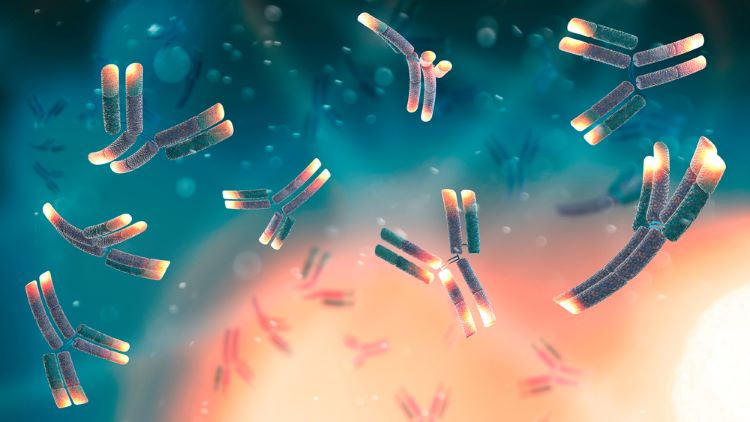Miniaturised PAT tool demonstrates real-time aggregation measurement
Posted: 5 September 2023 | Catherine Eckford (European Pharmaceutical Review) | No comments yet
Researchers have described how a process analytical technologies (PAT) fluorescent dye (FD)-based microfluidic sensor facilitated immediate feedback and control of process parameters for continuous downstream processing.


Potential of real-time measurement through miniaturisation of a process analytical technology (PAT) technique has been reported in a Biotechnology and Bioengineering paper. A micromixer was able to effectively detect aggregation in offline measurement-validated samples. The authors described how a PAT fluorescent dye (FD)-based microfluidic sensor was successfully implemented in an integrated downstream process.
PAT tools are crucial for measuring real-time product quality attributes, such as protein aggregation, when monitoring and controlling continuous processes, Pedro et al. explained.
The approach illustrated in the paper reported how miniaturising these analytical techniques can boost measurement speed and facilitate quicker decision-making.
An FD-based miniaturised sensor has previously been developed, the authors wrote. This is a zigzag microchannel which mixes two streams under 30 seconds. The researchers utilised two established FDs in a micromixer to detect aggregation of the biopharmaceutical monoclonal antibody (mAb). The micromixer was implemented in a lab-scale integrated system as a method of purifying the selected mAbs.
Results of the PAT study
According to the authors, both the FDs detected aggregation levels starting at 2.5 percent. Yet real-time measurement the application and assessment in an integrated continuous downstream process was still required, they added.
Method
Firstly, a viral inactivation and two polishing steps were reproduced. This sent a sample of the product pool after each phase to the microfluidic sensor for aggregate detection.
Additionally, another UV sensor was connected after the micromixer. A signal increase would indicate that aggregates were present in the sample, the paper stated. As a result, the at-line miniaturised PAT tool offers an aggregation measurement under 10 minutes. This therefore enables better process understanding and control. As only an extra UV monitor is required for the analytical measurement, a FD-based microfluidic sensor is a relatively economical option, the authors stated.
The final steps in the integrated downstream process for the purification of mAbs were undertaken. Then, an integrated downstream system was developed in a column chromatography system to implement the previously developed micromixer.
Adding two superloops and one extra UV sensor enabled the microfluidic sensor to be implemented, the authors highlighted. The additional superloops enabled the collection of the mAb samples to be sent for analysis and consequently, reduced the flow rate. The extra UV sensor allowed the chromatographic run to be monitored while the already existing UV was used for the aggregation measurement.
The authors also reported several strategies that reduced measuring time of the microsensor. For example, reducing the connection tubes length or filling them with sample/FD beforehand, enabled the measuring time to reduce from 60 minutes to 10 minutes.
Potential application in downstream processing was also discussed in the paper. Depending on the regulatory guidelines for the presence of aggregate in the final formulation of the mAb, a more (CCVJ) or less (Bis-ANS) sensitive FD can be selected to detect aggregation in the micromixer, noted the authors.
How was analytical measurement done in under 10 minutes?
- By placing the micromixer close to the InlS valve, the volume of the connection tubes, was reduced as much as possible
- The connection tubes were filled with sample prior to analytical measurement
- To clean and eliminate any remaining sample or FD, the connection tubes and micromixer were flushed with water at a flow rate of 5 µL min−1 after each aggregate detection
- Prior to measurement, the UV signal was auto-zeroed with FD and sample buffer in the micromixer. This eliminated any interference from the FD’s intrinsic fluorescence.
The PAT tool described in the study cannot produce a quantifiably measurement of the level of aggregation, the researchers acknowledged. However, the microfluidic chip can rapidly detect high molecular weight (HMW) species, which is undesirable for biomanufacturing mAbs. With the implementation in the integrated system, a real-time measurement was achieved, even under the desired 10 minutes.
Pedro et al. concluded that the miniaturisation of the analytical technique shortens the measurement time. Through the measurement of real-time critical quality attributes (CQAs), immediate feedback and control of the process parameters can be achieved. The authors provided an example, whereby a control strategy can be implemented during measurement if an increase in the UV signal at 520nm occurs.









